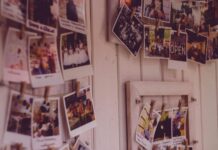After taking a last bite of Thanksgiving dinner, scores of people rushed over to major retail stores to line up for Black Friday sales, entranced by the possibility of securing doorbuster deals. At some stores, including Target, order and security were at their prime as shoppers stood in neat, but growing lines and employees watched closely, preventing stealthy customers from cutting. Inside, Target employees could be found near the entrance, instructing shoppers not to run and directing others around the store.
High-end retail stores were equally characterized by order. After working at the Janie and Jack outlet store on Thanksgiving evening, fourth year biology major Laura Aguilar recalls, “We were on the lookout for shoplifters who thrive from the Black Friday mayhem, but that was the most we dealt with. Most of our customers were actually really polite and sympathetic that we had to work on Thanksgiving.” For most others, such as Walmart and Best Buy, incidences of brawls, theft and stampedes over items painted the news. The horrific scenes of angry zombie Americans play over again year after year, but the motivation underlying such consumerist demands remain.
On Nov 13, Ye Li, an assistant professor of management at UC Riverside’s School of Business Administration, co-authored and published the paper, “The Financial Costs of Sadness.” The paper conveys that sadness spurs the desire for immediate retail therapy over long-term financial benefits, a trend that Li and other researchers found in their three experiments. Otherwise known as the myopic misery effect, Li’s findings help to explain the emotional workings of American consumerist culture.
The Happy Planet Index (HPI), a measure of reported life satisfaction, life expectancy, and ecological footprint has been implemented by the New Economics Foundation each year to survey countries from all over the globe. This past year, the United States placed 105th despite its high gross domestic product, in contrast to countries in the Caribbean Basin that have placed high in rankings regardless of economic strife. Such comparisons alone shed light on the illusion that affluence equates to happiness and satisfaction with life. Rather, it appears that such mentality has ensnared American consumers into an obsession with material wealth. Nevertheless, Americans continue to report high levels of dissatisfaction and anxiety.
When asked about the contradiction in American culture, third year biology major Sapphire Ear explains, “Our culture is more consumer-run than many others. Most people lack the time to enjoy real quality time, doing more meaningful activities, so they depend on the things they buy for simple gratification. Marketing companies know this as well, so they convince people to spend more than they intended.”
Nonetheless, college students have admitted to partaking in the cycle. Laura Aguilar says, “I went through a weird phase over the summer where I started to stress about buying a pair of colorful pants. At the time, I was stressed about the Dental Admission Test and somehow, buying into a trend made me feel like I was doing something right at least in keeping a good image. I related with a promise that things were going to be better if I could feel better about how I looked.” Among her friends, Aguilar describes a similar trend: “Sometimes when they are worried about school, some of my friends go to Target and buy something to make themselves feel better.” She also takes another factor into account, noting that “for college students, the issue of stress is another motivating factor in turning to retail therapy.”
On the other hand, Sapphire Ear believes that the tendency to seek retail therapy over other emotion-based coping outlets is “subjective, as people react differently from others.” She continues, “Introspection or retail therapy would work in helping to console me whenever something bad happens, but whether I choose one or the other depends on the circumstances of the situation.” However, Ear mentions that if it’s something more serious, like the death of a loved one, then she is more likely to seek introspection. But if it’s something of less weight, like a bad test score, then she’ll choose to spend.
While the impact of sadness on the pursuit of retail therapy has been conveyed, the effect of other emotions, such as anger, fear and stress has yet to be studied, calling for further research. However, Li notes, “I think the myopic misery effect isn’t unique to sadness,” suggesting that similar trends may be found in studying other emotions. Ultimately, Li’s paper proves significant in helping Americans redefine happiness on their own terms, signaling the importance of introspection. For those with an addiction to building material wealth, reflection may be the first step towards finding a balance that will lead to happiness in the long term. But ultimately, it is this first small step that could make the largest difference.








